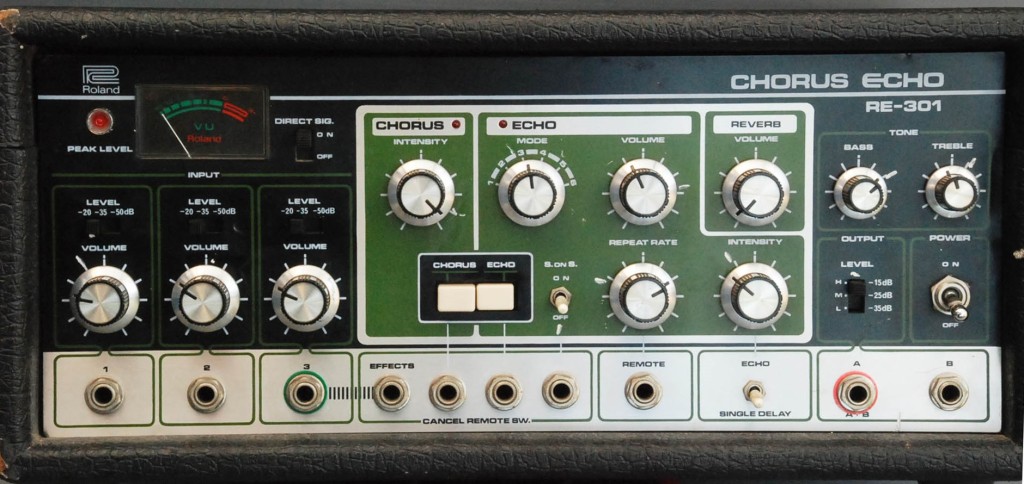Some suggestions for how to approach designing a patch for a particular tune.
A member of the Blue Nebula Owners Club group on Facebook was asking about patches for some Shadows tunes that aren’t included in the Blue Nebula’s standard patch set. Rather than just give my opinion of what the patch setting should be for a particular tune, I thought I would explain how we can try to work it out. Hopefully, this will help users come up with their own patch settings which they might like to share in our User Contributed Patch database 😊.
Refer to Editing a User Patch in the Blue Nebula User Manual if you’re unsure how to edit a patch.
My first step is to find the recording date as we can then make a reasonable guess as to which echo machine Hank was using at that time.
In the case of “Walking in the Air” which is one of the tunes that was asked about, this was recorded by the Shadows in 1987 on the “Simply Shadows” album.
The next step is to take that date and find which echo machine Hank was likely using at that time. A good resource for this information is the TVS3 website maintained by Professor Paul Rossiter, designer of the TVS3.
Hank’s Echo Units |TVS Specialty Products
From that page we see that between 1980 to 1995 Hank was using the Roland RE301. He also used the Roland RE501 between 1980 and 1997 but Paul states that the latter machine has not been positively identified on any recordings.
First conclusion: Walking in the Air was likely recorded using the Roland RE301 so we’ll choose that for this patch.

Now we have the correct echo machine we can try to tease out the settings we need. The BN’s RE301 is emulating Mode 5 of the original machine. The RE301 had 3 playback heads and in Mode 5 Head 1 is off and Heads 2 and 3 are on. In this machine the selected heads also provide the feedback. This is all emulated accurately in the BN RE301 program so if we select the RE301 program, we will be good to go, once we determine the other three parameter settings: Mix, Vari and FBack.
The Mix (P1 knob) controls how much echo is mixed in with the dry signal and requires listening to the original recording and adjusting P1 until it sounds about right. The echo delay may not be correct yet but just try to get the amount of echo close to what you hear. Some users like to hear lots of echo but that is a matter of personal taste. There is quite often a lot less echo on the record than you imagine there is.
The Vari control (P2 knob) in the BN RE301 simulates the variable motor speed of the real RE301. Whilst the heads are all in fixed mechanical positions, the speed of the tape transport could be controlled using the Repeat Rate knob on the original machine. When the motor ran slower the delays became longer and vice versa.
To try to estimate the correct delay time it is handy if the tune has a section where Hank plays some muted (damped) notes as the muting cuts off the tail of the note and this can let us hear the delay time of the echo and the number of repeats more easily.
In “Walking in the Air” there is a muted section around the 2-minute mark, and we can listen for the last note of a group of notes that Hank plays and keep tweaking the BN P2 and P3 until we get the BN matched as closely as possible to the delay and the number of repeats we hear on the record. It might help if you are able to load the track into your DAW (Digital Audio Workstation) and set that section to loop over and over.
Keep adjusting and listening until you are happy then save your patch and try playing along to the whole recording. If you decide the settings need a little tweak just hit the Edit button and make some slight adjustments to the P1, P2 and P3 knobs and re-save.


Dank Phil voor de uitleg, ik was er al mee bekent, anderen misschien niet, dus hulp is altijd welkom. Met vriendelijke groet Tonnie
Thanks Tonnie 🙂